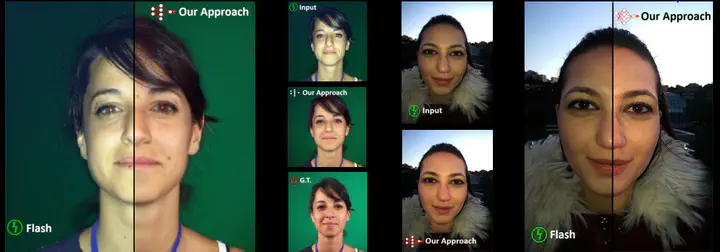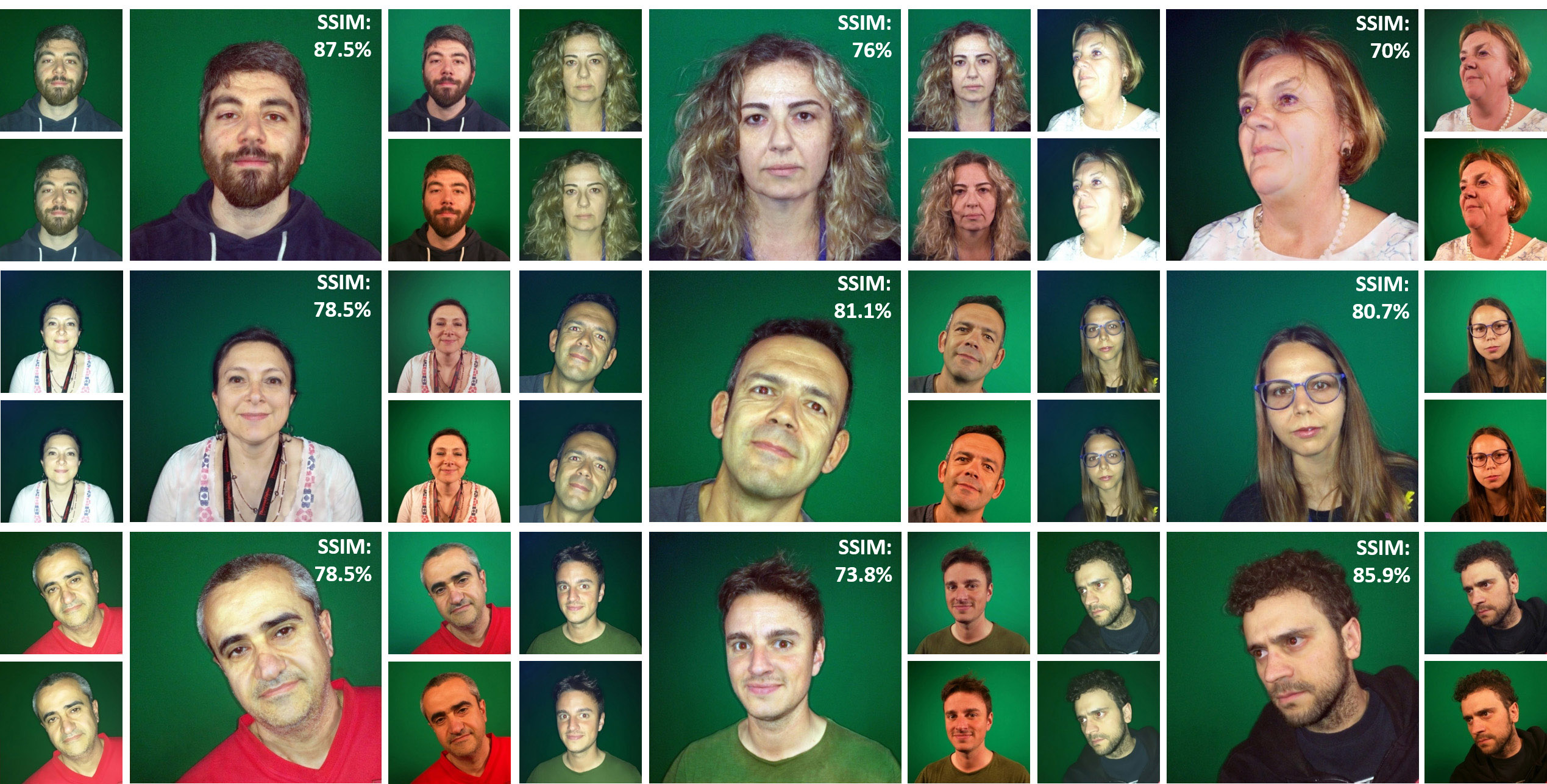
Abstract
Abstract We present a method for turning a flash selfie taken with a smartphone into a photograph as if it was taken in a studio setting with uniform lighting. Our method uses a convolutional neural network trained on a set of pairs of photographs acquired in an ad-hoc acquisition campaign. Each pair consists of one photograph of a subject’s face taken with the camera flash enabled and another one of the same subject in the same pose illuminated using a photographic studio-lighting setup. We show how our method can amend defects introduced by a close-up camera flash, such as specular highlights, shadows, skin shine, and flattened images. Website to the official publication: Signal Processing: Image Communication. DOI: 10.1016/j.image.2019.05.013. Results Samples of validation data. Each group of images is composed of: the original image taken with the smartphone flash (top left); the flash image to which the bilateral filter was applied (bottom left); the image reconstructed by the difference prediction of the CNN (center); the ground truth reconstructed (top right); the ground truth (bottom right). \revision{The SSIM was computed by comparing the central image of each group and the image at top right.
